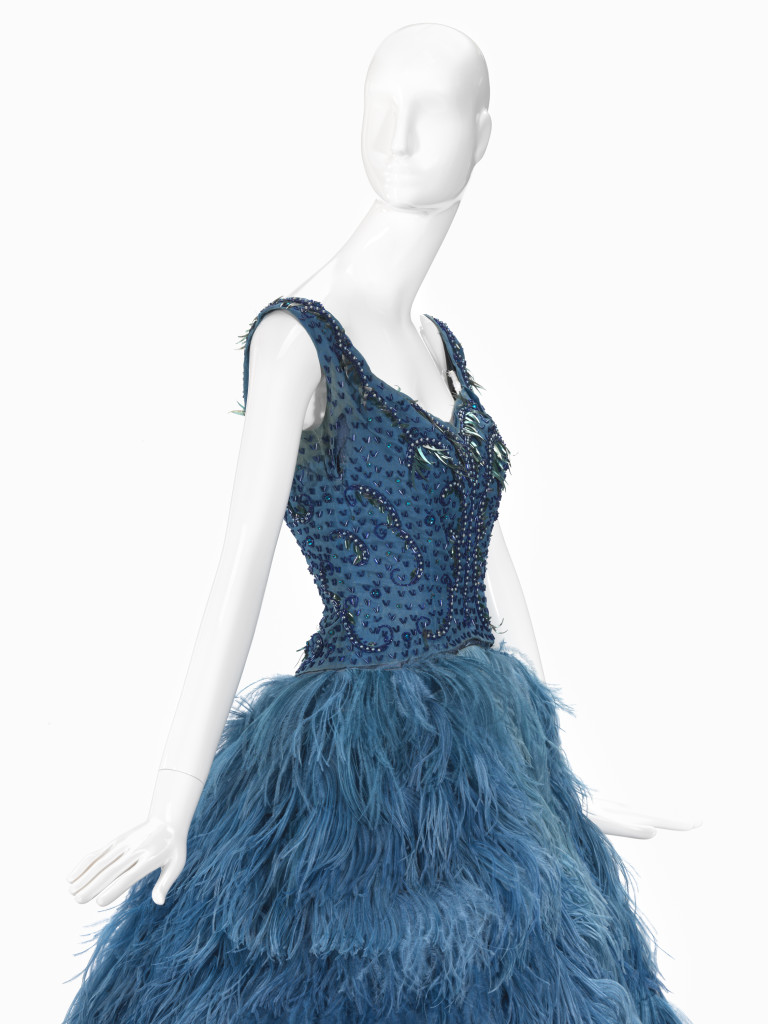One of the joys of the National Gallery of Victoria’s 200 Years of Australian Fashion exhibition is it caters for all audiences.

Being a `fashion novice’ I was happy to just look at the clothes and decide if I would wear them. My colleague, a fashion aficionado, studied the construction of the clothes, noted how fashion had changed and listened intently to the recorded interviews with some of the designers.
The exhibition confirmed what I have already suspected – to be considered fashionable I needed to have been born in a different era! My favourite pieces amongst the 120 works on show were definitely the more historic.

As the title suggests, the exhibition surveys the last 200 years of Australia’s fashion industry and celebrates Australia’s voice in the industry. It features works from over 90 designers.
Highlight pieces include the earliest known surviving dress (c1805), a glamorous 1950s blue feathered ball gown by Collins Street salon, La Petite and a dress from Collette Dinnigan’s 1995 Paris runway show, where she became the first Australian designer invited to show on-schedule at Paris Fashion Week.

There’s also a newly commissioned work by Dion Lee that is said to signpost the future of Australian fashion. It stands over four metres tall and is covered in Swarovski crystals.
The exhibition is divided into 10 themes/concepts. Many of my favourite pieces were located in the Department Store section which highlights the late 1800s when stores such as Buckley & Nunn and Farmer & Co., offered custom made and imported gowns.
The Salon was another favourite section. It reflects the grandeur of the Paris-style salon where mid-century gowns were paraded and purchased, particularly along the ‘Paris end’ of Collins Street. It also showcases the work of talent Australian couturiers as well as the appetite for glamour in the 1950s.
While I wouldn’t necessary want to wear any of the clothes in the Colonial section it was interesting to see the early Australian designs. This section also houses the earliest examples of surviving dress in Australia.

Other sections include Dressmakers and Tailors which depicts the crafts of dressmaking and tailoring and the emergence of the individual designer label that came to the fore in the late 1870s. Minis and Maxis marks the various cultural movements of the 1960s through the advent of the mini-skirt, followed by a return to full length hems in bold patterns in the 1970s.
Flamingo Park presents a celebration of Australian motifs such as native flora and fauna. Art Clothes considers the advent of contemporary Australian fashion in the art gallery from 1980 with particular focus on the Art Gallery of NSW. Fashion Design Council captures the impact of the creative collaboration of independent designers through parades, exhibitions and publications from 1984 to 1993. Fashion Weeks presents Australian fashion on the world stage and showcases the ways in which these important organisations celebrate, support and promote Australian fashion.

Contemporary Fashion presents the individual signatures of some of Australia’s foremost designers, as well as Dion Lee’s work.
It’s the fashion in this section I understood the least but then that’s the joy of fashion and this exhibition – there is something for everyone!
200 Years of Australian Fashion is on at NGV Australia Federation Square until 31 July. For information and tickets visit the Gallery’s website or ring 8620 2222.
- fashion NGV, review
Subscribe My Newsletter
Unsubscribe at any time.




